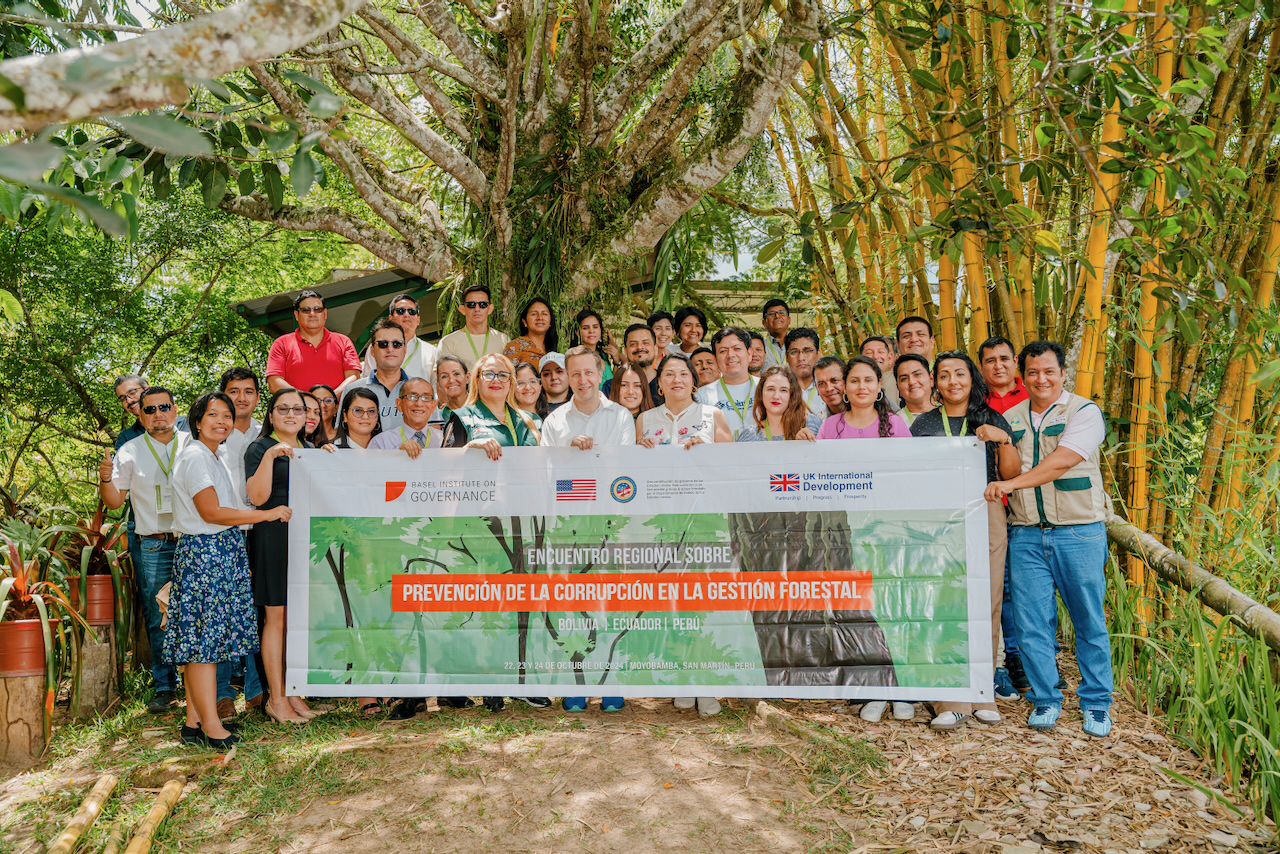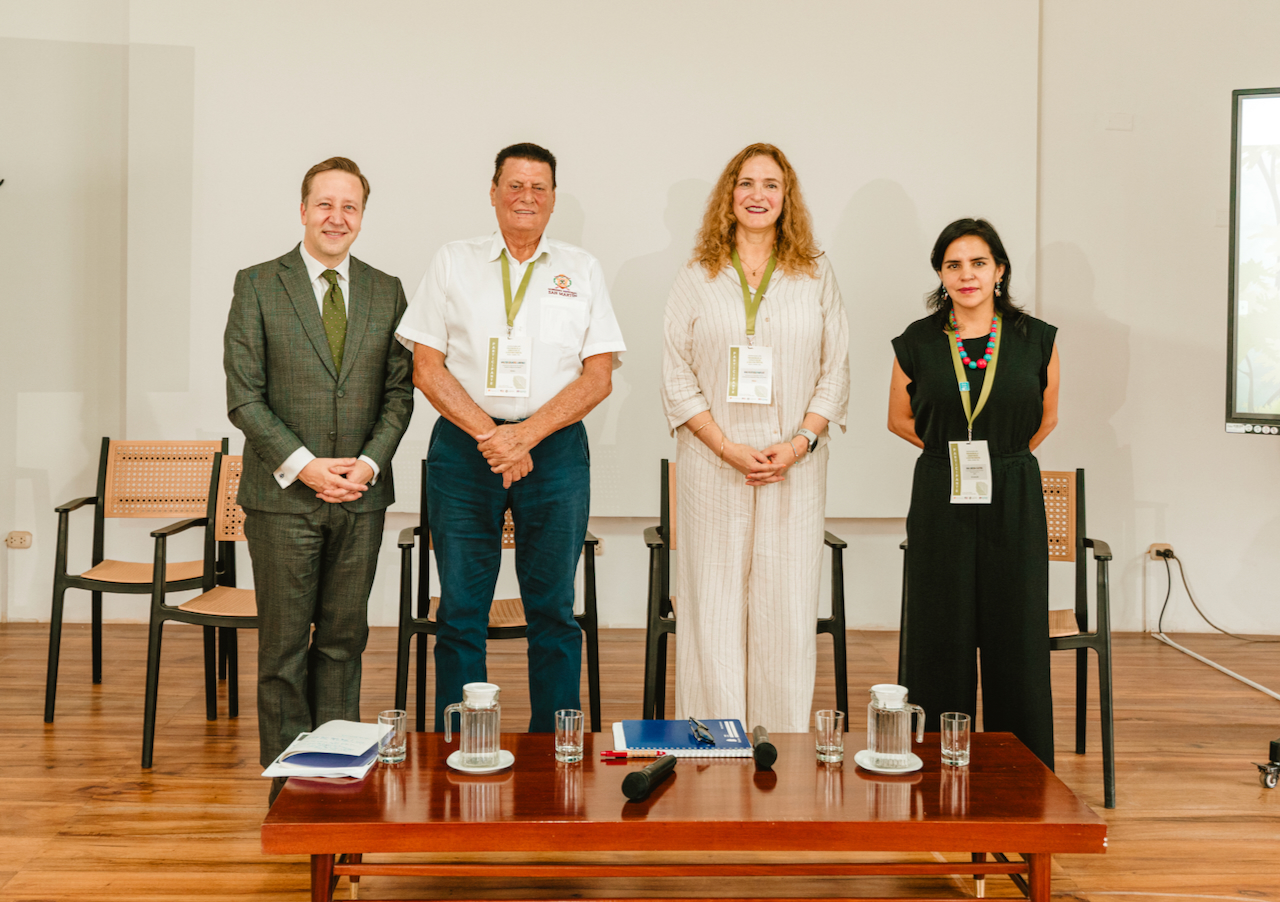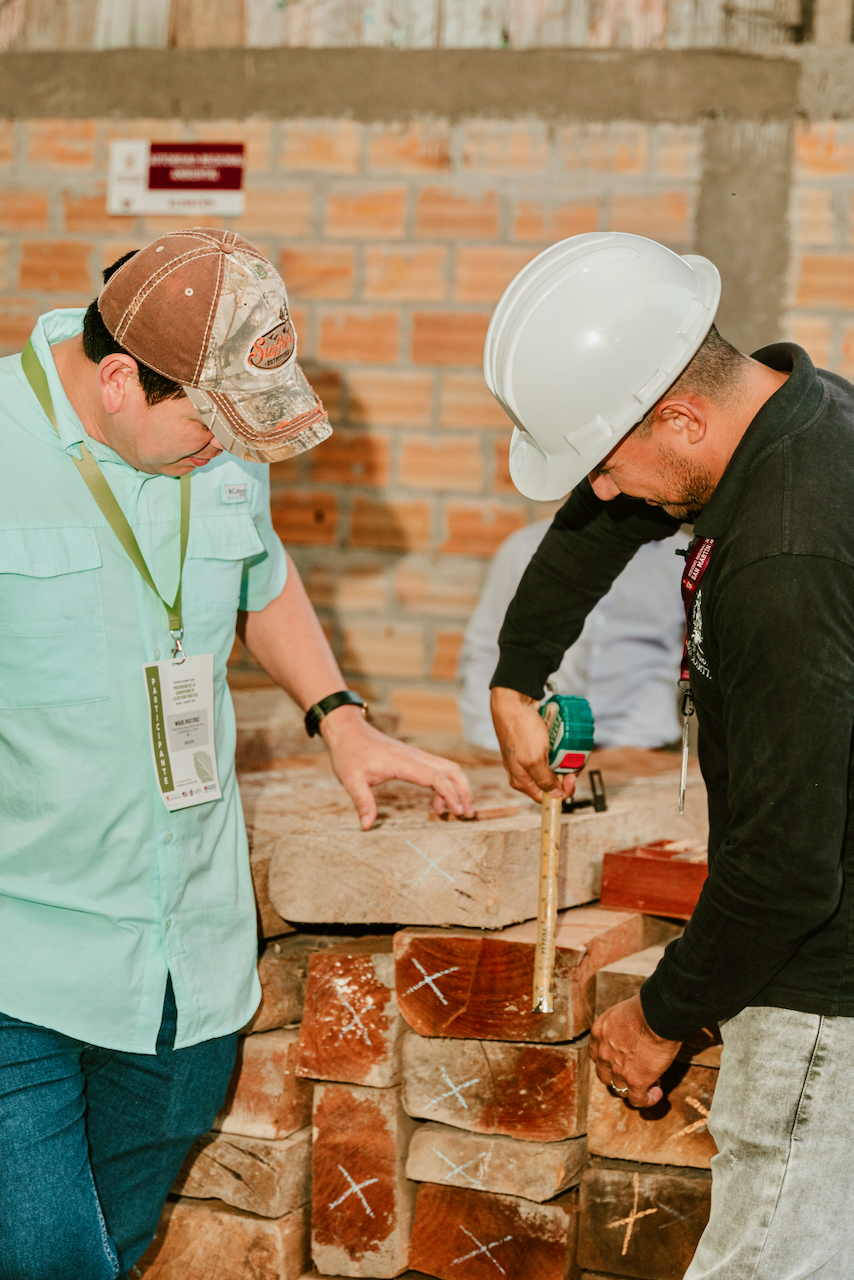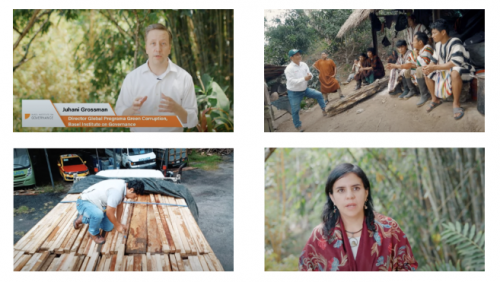Joining forces to protect the Amazon forest and its communities from corruption

Bolivia, Ecuador and Peru are home to some of the world’s most important forests, and timber is a valuable natural resource. Protecting forests from threats posed by corruption is essential not only for protecting biodiversity and mitigating climate change, but also for protecting the livelihoods of local communities.
Tackling forestry-related corruption is a task that transcends country borders and requires the active participation and collaboration of government authorities, experts and representatives of civil society and local Indigenous communities.
That’s why we were thrilled to bring together national and subnational forestry agencies from Bolivia, Ecuador and Peru on 22–24 October 2024 for the first Regional Meeting on Anti-Corruption in Forest Management. They were joined by forest governance experts and civil society representatives committed to transparency and sustainability in natural resource management.
The event took place under a Green Corruption project funded by the U.S. Department of State Bureau of International Narcotics and Law Enforcement Affairs and the UK's Conflict, Stability and Security Fund. It was held in the city of Moyabamba in San Martín, Peru, whose government is a long-standing partner of our Public Finance Management programme.
Sharing knowledge and best practices
The meeting provided a platform for participants to share the results of their implementation of corruption risk management plans in their respective forestry sectors – a process carried out with our Green Corruption team’s technical assistance.
Aldo Bautista, Senior Specialist, Corruption Prevention in the Green Corruption programme, explained
“Under this project, our team has been working hand in hand with six environmental agencies across Bolivia, Ecuador and Peru, including national entities responsible for forest management. The resulting corruption risk assessments and management plans are focused on the timber value chain and on the conservation of protected areas. The five corruption risk management plans that we co-developed with our government partners highlight 21 high-priority risks in total and 33 mitigation measures that are being implemented with our team’s technical assistance.”
The six beneficiary agencies presented their corruption risk plans and the mitigation measures they had implemented to not only prevent corruption but also enhance the efficiency and transparency of forest management. The measures ranged from improvements to processes and regulations to technological innovations, capacity building, intercultural communication and the strengthening of enforcement and penalties.
In addition, specialised agencies shared innovative approaches and tools to further enhance transparency and controls in forest management.
Controls in practice: a low-cost smart microscope to verify timber
The meeting also included field visits to see the impact of anti-corruption measures on the ground. At the national forestry control point of Aguas Claras, for example, participants saw how strategic inspection points help to reduce cases of illegal logging by ensuring that all timber products can be traced and their legal origin verified.
The participants were particularly interested in the small, low-cost digital microscope that San Martín inspectors use to verify the timber being transported out of the area. Connected to a smartphone, the microscope allows inspectors to quickly and accurately match the timber to a list of various types of species. Participants from Ecuador and Bolivia actively interacted with the San Martin officer demonstrating the process, and are keen to use the same low-cost technology for detection in their countries.
This highlights not only the value of peer learning and physical interaction, but also that controls and corruption prevention do not need to be expensive.
Forest management isn’t only about inspections and controls to prevent illegal logging and trafficking – often it’s about sustainable management of legal trade in rare plant and tree species. At Agro Oriente Viveros, one of Peru’s largest and most modern plant nurseries, participants saw how San Martín carefully and sustainably manages its trade in orchids, for which the region is known.
Working together for better sustainability initiatives
This regional meeting not only provided a space to learn about different strategies to address corruption in the forestry sector but also facilitated network building among officials at different levels and from different countries.
Opportunities such as these allow our partners to foster alliances across national boundaries, and lay foundations for a collaborative regional approach that can ultimately be adapted to each country’s specific needs. It is these connections which will ensure the continuity and sustainability of transparent and sustainable forest management practices in the region.
From regional to global
The benefits of this collaboration extend beyond the continent. Lessons learned in one region can be adapted to enhance forest management in other contexts. As Juhani Grossmann, Head of our Green Corruption programme, explains:
“Globally, one of the biggest challenges is that the anti-corruption tools available to governments are rarely or insufficiently used in the environmental sector. Our Green Corruption programme has been able to work with partners in Bolivia, Ecuador and Peru to extend and strengthen existing anti-corruption tools for use by government forestry agencies.
We are very grateful for the opportunity to work with our partners and learn more together about how anti-corruption tools can benefit biodiversity and conservation efforts. These are the lessons that we can share and use in other parts of the world.”
Juhani Grossmann was among the senior Basel Institute staff present at the meeting, together with the Basel Institute’s Head of Latin America Oscar Solórzano and key members of our Green Corruption and Public Finance Management teams.
Broad participation
The event welcomed the participation of partner agencies including:
- Ecuador’s Ministry of Environment, Water and Ecological Transition
- Bolivia’s Authority for the Social Control of Forests and Land
- Peru’s National Forest and Wildlife Service
- The San Martín Regional Environmental Authority and the Cordillera Escalera Regional Conservation Area
Also in attendance were the head of Peru’s national Public Integrity Secretariat and the Regional Governor of San Martín.
We also welcomed representatives of the Supervisory Body for Forest Resources and Wildlife, the National Service for State-Protected Natural Areas, Amazon Conservation, the Institutional Integrity Unit of the San Martín Regional Government and the Ucayali Regional Government. Important contributions were made by civil society, including the World Wildlife Fund and the Proética (the Peruvian chapter of Transparency International).








